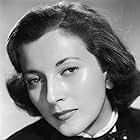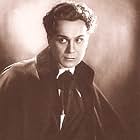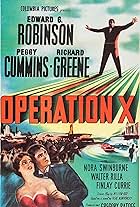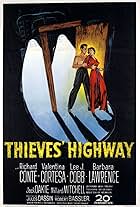Count Orlof, one of Catherine of Russia's many overnight favourites, travels to Venice on her behalf to abduct Elizabeth Tarakanova who has been laying claim to the throne from the Crimea. O... Read allCount Orlof, one of Catherine of Russia's many overnight favourites, travels to Venice on her behalf to abduct Elizabeth Tarakanova who has been laying claim to the throne from the Crimea. Once there, he finds the local charms of the Princess hard to resist.Count Orlof, one of Catherine of Russia's many overnight favourites, travels to Venice on her behalf to abduct Elizabeth Tarakanova who has been laying claim to the throne from the Crimea. Once there, he finds the local charms of the Princess hard to resist.
Valentina Cortese
- Elizabeth - Princess Tarakanova
- (as Valentina Cortesa)
William Tubbs
- Boris
- (as William C. Tubbs)
- Director
- Writers
- All cast & crew
- Production, box office & more at IMDbPro
Storyline
Did you know
- TriviaThe plot of this film derives from historical fact, but is predominantly an absurd fiction. Far from falling in love with (and later rescuing) the Princess Elisabeth Tarakhanova, Count Orloff ruthlessly seduced her and then arranged for her to be kidnapped from Livorno in Italy and taken back to Russia, where she died in prison only months later. It is highly likely that her claim to the throne of Russia was a false one, as Catherine the Great always claimed. Also, "Tarakhanova" was a nickname bestowed on her after her death; it was never used as a name in her lifetime.
- Crazy creditsOpening credits prologue: The Crimea, formerly a province of Turkey, is occupied by the armies of Catherine of Russia.
- ConnectionsAlternate-language version of La rivale dell'imperatrice (1951)
Featured review
I was unaware of this film until recently and became interested in it for three reasons: because it is a swashbuckler, because it concerns Catherine The Great (I have been checking out several efforts revolving around her as part of my ongoing and extensive Josef von Sternberg retrospective) and because, in view of the title, I was under the impression that it would be a remake of the excellent 1925 Rudolph Valentino vehicle THE EAGLE (but, as it turned out, not only the hero here was no Zorro-like avenger but he is never actually referred to by this nick-name!).
Being such an obscure film (it is not even listed in the "Leonard Maltin Movie Guide"!), I went into it not expecting much but I have to admit that I thoroughly enjoyed it and, more importantly, was quite impressed with the film's noir-ish look (Erwin Hillier's shadowy cinematography and expressive lighting is exquisite throughout); another historical piece made in this style had been Anthony Mann's fine THE BLACK BOOK (1949) – yet it is all the more surprising here because, rather than a Hollywood picture, this is a British/Italian co-production (even if a reliable Tinseltown artisan was recruited for the job after all)!
Still, the plot itself, while offering nothing we have not seen before, is most engaging (it was based on an unproduced script by the French Jacques Companeez who numbered the likes of Jean Renoir, Robert Siodmak and Jacques Becker among his collaborators along his career!) and the characters ably served by the cast (albeit minor league): star Richard Greene made several films in this vein and, though I had not watched him in any for several years, I had somehow pinned him down as a lightweight lead – however, he proved reasonably dependable in a Louis Hayward kind of way (though, thankfully, the actor resisted the urge to 'send it up'); his leading lady is not the typical bland beauty either, rather a respected actress i.e. Italian Valentina Cortese, here in the heyday of her international career. Interestingly, the protagonists 'meet cute' at the famed Venice carnival, so that they are then astonished to learn of each other's identity (he is the notorious Count Orloff dispatched by Catherine to eliminate the pretender to her throne) from across the balconies of an opera house!
In support, likewise unassuming yet undeniably effective, we have: Binnie Barnes as Catherine (she had been Katherine Howard in THE PRIVATE LIFE OF HENRY VIII {1933}, Lillian Russell in DIAMOND JIM {1935} and Milady De Winter in THE THREE MUSKETEERS {1939}); Charles Goldner, familiar to me by face if not by name, is a slimy villain (forever badmouthing Greene with the Empress who, ultimately, gets his just desserts in his own dungeon!); and Walter Rilla as the aristocrat orchestrating an attempt to usurp the Russian throne by presenting the daughter (Cortese), born out of wedlock, of the late Elizabeth II (the ruler that preceded the German-born Catherine, who had ascended to power after marrying and eliminating Elizabeth's mad son Peter) – he had hoped to marry the girl himself and then dispose of her to get his real love (Greta Gynt, from the above-average Bela Lugosi vehicle THE HUMAN MONSTER {1940}) by his side, but the latter is jealous of his attentions towards Cortese and is thus just as ready to double-cross him as give her 'rival' away to Goldner!
There is plenty of intrigue and action to keep one watching, a believable romance and, at the climax, a dash of sadism to boot (Cortese is tied and whip-lashed so as to force her to renounce her professed claim to the throne) but, as I said, the film's trump card remain the visuals (highlighting imaginative camera-work while being sumptuous in costume and production design) which go a long way into belying the modest budget that was probably at its creators' disposal.
Being such an obscure film (it is not even listed in the "Leonard Maltin Movie Guide"!), I went into it not expecting much but I have to admit that I thoroughly enjoyed it and, more importantly, was quite impressed with the film's noir-ish look (Erwin Hillier's shadowy cinematography and expressive lighting is exquisite throughout); another historical piece made in this style had been Anthony Mann's fine THE BLACK BOOK (1949) – yet it is all the more surprising here because, rather than a Hollywood picture, this is a British/Italian co-production (even if a reliable Tinseltown artisan was recruited for the job after all)!
Still, the plot itself, while offering nothing we have not seen before, is most engaging (it was based on an unproduced script by the French Jacques Companeez who numbered the likes of Jean Renoir, Robert Siodmak and Jacques Becker among his collaborators along his career!) and the characters ably served by the cast (albeit minor league): star Richard Greene made several films in this vein and, though I had not watched him in any for several years, I had somehow pinned him down as a lightweight lead – however, he proved reasonably dependable in a Louis Hayward kind of way (though, thankfully, the actor resisted the urge to 'send it up'); his leading lady is not the typical bland beauty either, rather a respected actress i.e. Italian Valentina Cortese, here in the heyday of her international career. Interestingly, the protagonists 'meet cute' at the famed Venice carnival, so that they are then astonished to learn of each other's identity (he is the notorious Count Orloff dispatched by Catherine to eliminate the pretender to her throne) from across the balconies of an opera house!
In support, likewise unassuming yet undeniably effective, we have: Binnie Barnes as Catherine (she had been Katherine Howard in THE PRIVATE LIFE OF HENRY VIII {1933}, Lillian Russell in DIAMOND JIM {1935} and Milady De Winter in THE THREE MUSKETEERS {1939}); Charles Goldner, familiar to me by face if not by name, is a slimy villain (forever badmouthing Greene with the Empress who, ultimately, gets his just desserts in his own dungeon!); and Walter Rilla as the aristocrat orchestrating an attempt to usurp the Russian throne by presenting the daughter (Cortese), born out of wedlock, of the late Elizabeth II (the ruler that preceded the German-born Catherine, who had ascended to power after marrying and eliminating Elizabeth's mad son Peter) – he had hoped to marry the girl himself and then dispose of her to get his real love (Greta Gynt, from the above-average Bela Lugosi vehicle THE HUMAN MONSTER {1940}) by his side, but the latter is jealous of his attentions towards Cortese and is thus just as ready to double-cross him as give her 'rival' away to Goldner!
There is plenty of intrigue and action to keep one watching, a believable romance and, at the climax, a dash of sadism to boot (Cortese is tied and whip-lashed so as to force her to renounce her professed claim to the throne) but, as I said, the film's trump card remain the visuals (highlighting imaginative camera-work while being sumptuous in costume and production design) which go a long way into belying the modest budget that was probably at its creators' disposal.
- Bunuel1976
- Aug 19, 2011
- Permalink
Details
- Release date
- Countries of origin
- Language
- Also known as
- Graf Orloffs gefährliche Liebe
- Filming locations
- Teddington Studios, Teddington, Middlesex, England, UK(studio: made at Teddington Studios)
- Production companies
- See more company credits at IMDbPro
- Runtime1 hour 33 minutes
- Color
- Aspect ratio
- 1.37 : 1
Contribute to this page
Suggest an edit or add missing content





























